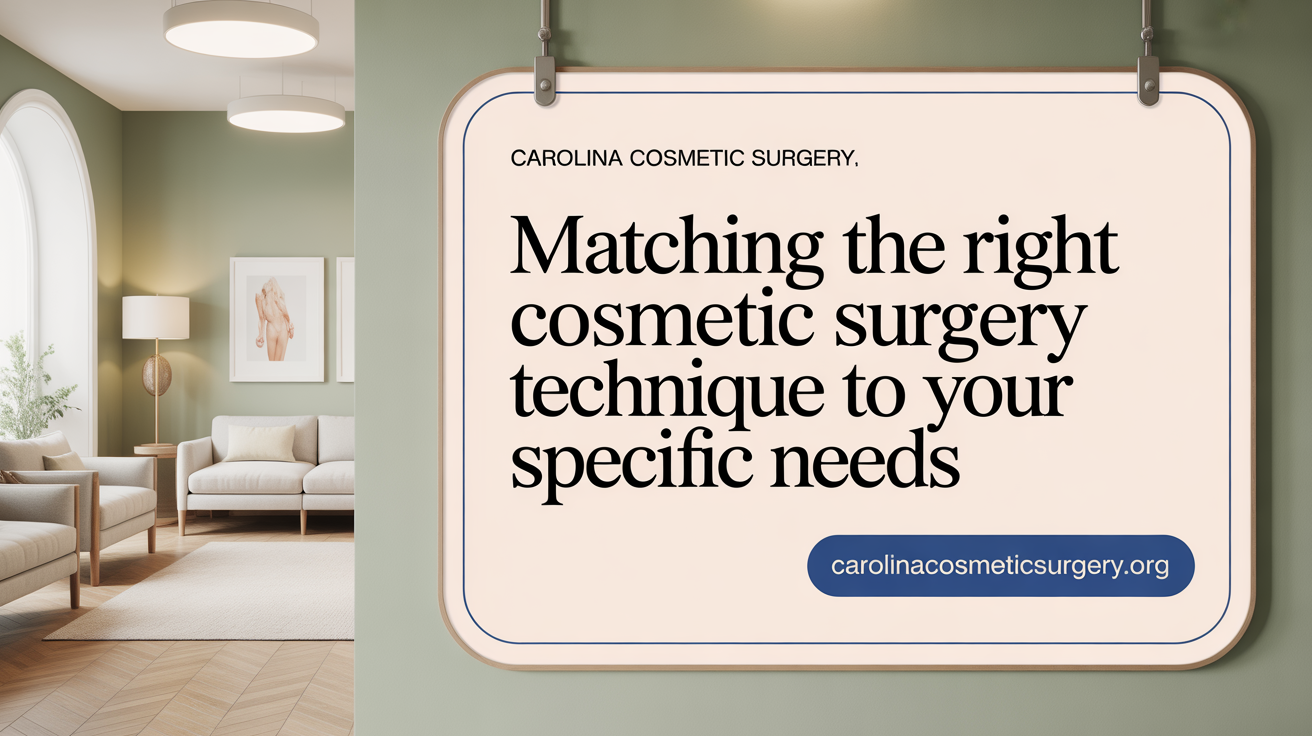Understanding Rhinoplasty Approaches: Internal vs External
Rhinoplasty, widely known as a nose job, is a surgical procedure aimed at improving both the appearance and function of the nose. Two main surgical approaches exist: internal (closed) rhinoplasty and external (open) rhinoplasty. Each technique offers distinct advantages and challenges depending on the patient’s anatomy, surgical complexity, and desired outcomes. This article provides an in-depth comparison of these rhinoplasty methods, helping patients and professionals grasp their nuances and make informed choices.
Fundamental Differences Between Internal and External Rhinoplasty Techniques

What are the differences between internal (closed) and external (open) rhinoplasty techniques?
Open rhinoplasty is characterized by a small external incision across the columella—the tissue strip between the nostrils. This incision allows the surgeon to lift the nasal skin away from the underlying structures, providing full visibility and access. This approach is especially advantageous for complex cases involving nasal tip work, significant reshaping, or revision procedures. Because it offers a direct view of the nasal anatomy, it enables precise modifications and better control over the surgical outcome.
In contrast, closed rhinoplasty involves only internal incisions made within the nostrils. Since there are no external scars, this technique minimizes visible scarring and often results in a quicker recovery. It’s typically suited for minor adjustments, such as dorsal hump removal or subtle aesthetic changes, where extensive access is not necessary.
Surgical access and visualization differences
The primary distinction lies in access and visualization. Open rhinoplasty allows the surgeon to lift the nasal skin and cartilage for detailed examination and manipulation, making it preferred for complex corrections. This method facilitates advanced grafting and structural work.
Closed rhinoplasty, on the other hand, limits the surgeon’s view to the inside of the nostrils. This restriction can challenge complex reshaping but reduces tissue trauma and initial swelling, leading to a shorter recovery period.
Case suitability for each technique
Open rhinoplasty is often recommended for patients requiring extensive nasal revisions, complex tip work, or structural corrections. Its superior visibility makes it the go-to choice for addressing significant deformities or previous surgical failures.
Closed rhinoplasty is suitable for patients seeking minor nose enhancements, such as dorsal hump smoothing or minor asymmetry corrections. Its less invasive nature makes it appealing for those prioritizing minimal scarring and quicker recovery.
Both methods have merits, and the choice depends on the specific nasal issues, patient goals, and the surgeon’s expertise. A thorough consultation with a qualified surgeon can help determine the best approach for each individual case.
Advantages and Disadvantages of Internal and External Rhinoplasty Approaches

What are the benefits and disadvantages of internal (closed) versus external (open) rhinoplasty?
Closed rhinoplasty, also known as internal rhinoplasty, involves incisions made solely inside the nostrils. This approach offers several clear advantages. Patients benefit from no external scars, which makes the surgery less visible afterward. Additionally, it typically involves shorter operative times, less initial swelling, and a quicker recovery period. These features make it an ideal choice for minor nasal corrections such as dorsal hump removal or minor reshaping.
However, this technique has its limitations. The access to internal nasal structures is restricted, which can pose challenges when performing complex or extensive corrections. Surgeons may find it difficult to achieve the same level of precision or to manipulate nasal tissues as effectively as with the open approach.
On the other hand, open rhinoplasty involves an external incision across the columella, the tissue strip between the nostrils. This provides a direct view of the internal nasal framework, enabling meticulous work and greater surgical accuracy. It is especially beneficial for complex cases like significant tip work, nasal asymmetries, or revision surgeries where precise control is crucial.
The main drawback of open rhinoplasty is the small external scar, which usually heals well and becomes nearly invisible over time. Additionally, due to increased tissue handling and visualization, the procedure often takes longer to perform, and patients may experience slightly more swelling and a longer initial recovery.
Ultimately, the decision depends on individual nasal anatomy, correction goals, and the surgeon’s evaluation. While closed rhinoplasty is suited for less complex adjustments, open rhinoplasty provides the enhanced visibility necessary for more challenging cases. Consulting an experienced surgeon will help determine the most appropriate approach for each patient.
| Approach | Benefits | Drawbacks | Suitable For |
|---|---|---|---|
| Closed Rhinoplasty | No external scars, shorter surgery duration, quicker recovery, less initial swelling | Limited access to nasal structures, less precise for complex cases | Minor modifications, dorsal hump removal, curved nose corrections |
| Open Rhinoplasty | Better visualization, more precise corrections, ideal for complex or revision surgeries | Small external scar, longer surgery and recovery | Significant reshaping, tip work, nasal asymmetries, complex corrections |
Choosing the right surgical method is a personalized decision contingent upon the specific requirements of the nasal correction and the surgeon's expertise.
Indications and Appropriate Cases for Open and Closed Rhinoplasty

For which cases is each rhinoplasty approach most appropriate?
Choosing between open and closed rhinoplasty depends primarily on the specific needs of the patient and the complexity of the nasal modification required. Closed rhinoplasty, requiring incisions only inside the nostrils, is ideal for subtle corrections such as dorsal hump removal or minor tip adjustments where less extensive reshaping is needed.
In contrast, open rhinoplasty involves a small external incision across the columella, which provides a full view of the nasal structures. This approach is better suited for complex cases like significant structural alterations, revision surgeries, or when grafting techniques are necessary. It allows surgeons to perform more precise modifications, particularly in challenging cases such as reshaping wide noses or correcting nasal asymmetry.
Ultimately, the choice hinges on individual nasal anatomy, aesthetic goals, and the surgeon’s evaluation of the case complexity. Thorough consultation with a qualified surgeon ensures that the selected approach aligns with the patient's specific needs.
What challenges and complexities are associated with revision rhinoplasty?
Revision rhinoplasty presents distinct challenges compared to primary procedures. Altered nasal anatomy, scarring, and tissue changes from the initial surgery make correction more difficult. Achieving natural and harmonious results requires careful planning and significant surgical expertise.
Complex factors include dealing with compromised cartilage, thick or thin skin, and areas of soft tissue contraction. Surgeons often encounter structural deficiencies or deformities, which demand meticulous reconstruction and sometimes cartilage grafting.
The goal is to restore nasal support, improve aesthetics, and address any functional issues, all while minimizing further trauma. The complexity of revision rhinoplasty calls for an experienced, skilled surgeon capable of balancing aesthetic refinement with functional preservation. Success depends on understanding detailed nasal anatomy and employing advanced techniques to navigate previous alterations.
| Aspects of Revision Rhinoplasty | Challenges | Additional Details |
|---|---|---|
| Altered nasal anatomy | Difficult to predict outcomes | Prior surgeries modify the natural structure, complicating corrections |
| Scar tissue formation | Increased scarring | Scar tissue can limit tissue mobility and affect healing |
| Soft tissue changes | Tissue contraction and thinning | These changes influence nasal skin and support |
| Structural support restoration | Graft placement required | Ensuring stability and natural look |
| Functional correction | Septal support and airway | Maintaining or improving breathing functions |
Both techniques—open and closed—can be effectively employed in revision cases, but the choice depends on individual cases and surgical goals.
Technical Aspects of Internal and External Rhinoplasty Procedures

What techniques are involved in internal and external rhinoplasty?
The techniques involved in rhinoplasty include both open and closed methods. Open rhinoplasty requires an incision across the columella, which lifts the nasal skin to provide direct visualization of the underlying cartilage and bone, allowing for precise reshaping and graft placement.
Closed rhinoplasty involves incisions made inside the nostrils, resulting in no external scars, with the surgical work performed through these hidden cuts. Closed rhinoplasty generally has shorter operative time, less swelling, and faster recovery, making it suitable for less complex nasal corrections.
Both techniques can be tailored to the patient's needs, with open rhinoplasty offering better access for severe structural modifications and closed rhinoplasty being appropriate for more minor aesthetic improvements.
How does ultrasonic rhinoplasty compare in terms of invasiveness?
Ultrasonic rhinoplasty is considered a minimally invasive procedure because it uses high-frequency sound waves to precisely reshape nasal bones and cartilage through small incisions, reducing trauma to surrounding tissues.
Compared to traditional open or closed rhinoplasty, it results in less bruising, swelling, and postoperative discomfort, and often allows for quicker recovery.
The use of ultrasonic tools enables more accurate and controlled modifications, which can lead to improved aesthetic outcomes with lower complication rates.
While it is primarily performed as an open technique, its minimally invasive nature distinguishes it from more invasive approaches.
Overall, ultrasonic rhinoplasty offers a less invasive alternative with benefits in safety, precision, and recovery.
Comparing Outcomes, Risks, and Recovery in Open versus Closed Rhinoplasty
What outcomes and results are associated with internal versus external rhinoplasty?
Internal (closed) rhinoplasty usually results in no visible external scars and often allows for a quicker initial recovery. This approach is well-suited for minor corrections, such as dorsal hump removal or minor straightening, where less extensive reshaping is needed. Because it involves incisions inside the nostrils, the visibility of the internal nasal structures improves the surgeon’s ability to make subtle adjustments.
On the other hand, external (open) rhinoplasty features an incision across the columella — the tissue strip between the nostrils — which grants unparalleled visibility of nasal structures. This increased access allows for more precise reshaping, especially in complex cases like revision rhinoplasty or significant tip work. While open rhinoplasty often yields more refined and durable results due to better visualization, it may leave a small external scar, though most scars fade over time and are considered nearly invisible by patients.
Both techniques can produce high-quality outcomes when performed by experienced surgeons. The choice influences the scope of achievable results: open rhinoplasty typically accommodates more extensive modifications, resulting in a higher likelihood of satisfying, balanced aesthetic outcomes, particularly in complicated cases.
What are the risks and considerations associated with different rhinoplasty methods?
Open rhinoplasty offers benefits such as improved visualization and surgical precision, essential for complex or revision procedures. However, the external incision on the columella introduces potential issues like visible scarring, which most patients find acceptable since these scars tend to fade well over time.
Additionally, open techniques may involve slightly longer swelling during recovery and a marginally increased initial discomfort. Risks include nerve disturbance leading to temporary numbness, especially in the nasal tip, and a longer overall recovery period.
Conversely, closed rhinoplasty minimizes scarring by making all incisions inside the nostrils, eliminating external scars. This approach results in less initial swelling and possibly a quicker recovery, making it a popular choice for straightforward corrections.
However, the limited access inherent in closed rhinoplasty can constrain the surgeon’s ability to perform extensive reshaping or structural work, which makes it less suitable for complex cases. Risks involve potential asymmetry if the surgeon's view or access is insufficient.
Ultimately, selecting the technique involves weighing these advantages and risks in consultation with a qualified surgeon, taking into account the specific nasal concerns and goals of the patient.
Deciding Factors and Surgeon’s Role in Choosing Rhinoplasty Techniques

What factors influence the choice between internal (closed) and external (open) rhinoplasty?
The decision-making process for selecting a rhinoplasty technique hinges on several important factors. For complex cases requiring detailed structural work, open rhinoplasty is often preferred. This approach involves an external incision across the columella, providing surgeons with better visibility and access to nasal structures, which is essential for extensive modifications, revision surgeries, or reconstructive procedures.
In contrast, closed rhinoplasty involves making all incisions within the nostrils, leaving no visible external scars. It is generally suitable for minor adjustments such as dorsal hump removal or subtle nasal reshaping. Because of its less invasive nature, closed rhinoplasty may also result in quicker recovery and less initial swelling.
Surgeon experience and preference also play a significant role. An experienced surgeon with expertise in both techniques can assess which approach will deliver optimal results based on individual nasal anatomy and cosmetic goals. Patient considerations, such as concerns about visible scarring and recovery time, influence the final choice.
Ultimately, the specific nasal deformity, desired aesthetic outcome, and the surgeon’s skill set guide the appropriate approach, ensuring both safety and high-quality results.
Choosing the Right Rhinoplasty Approach: Personalized and Precise
Both internal (closed) and external (open) rhinoplasty offer reliable paths to improved nasal aesthetics and function, each with distinctive advantages tailored to different surgical needs and patient preferences. The open approach excels in offering unparalleled visualization and precision, particularly for complex, revision, or reconstructive cases, but involves a small external scar and potentially longer recovery. Conversely, closed rhinoplasty minimizes visible scarring and recovery time, making it ideal for subtle corrections. Ultimately, the choice hinges on a careful patient-surgeon consultation assessing nasal anatomy, complexity, goals, and expectations. With expert surgical skill, both approaches can achieve high satisfaction and aesthetically pleasing outcomes, underscoring the importance of individualized care in rhinoplasty surgery.
References
- Understanding the Variations in Rhinoplasty Techniques: Open vs ...
- Outcomes of Closed versus Open Rhinoplasty: A Systematic Review
- Closed vs. Open Rhinoplasty Techniques - Anne Arundel ENT
- Open VS Closed Rhinoplasty | Which is Best For Me?
- Choosing Your Rhinoplasty Procedure: Open or Closed? - Dr. Lozada
- Best Open vs Closed Technique Orange County & Beverly Hills
- Open vs Closed Rhinoplasty: Which is Best for Me?
- Rhinoplasty: What options are best for me? Open or closed rhinoplasty
